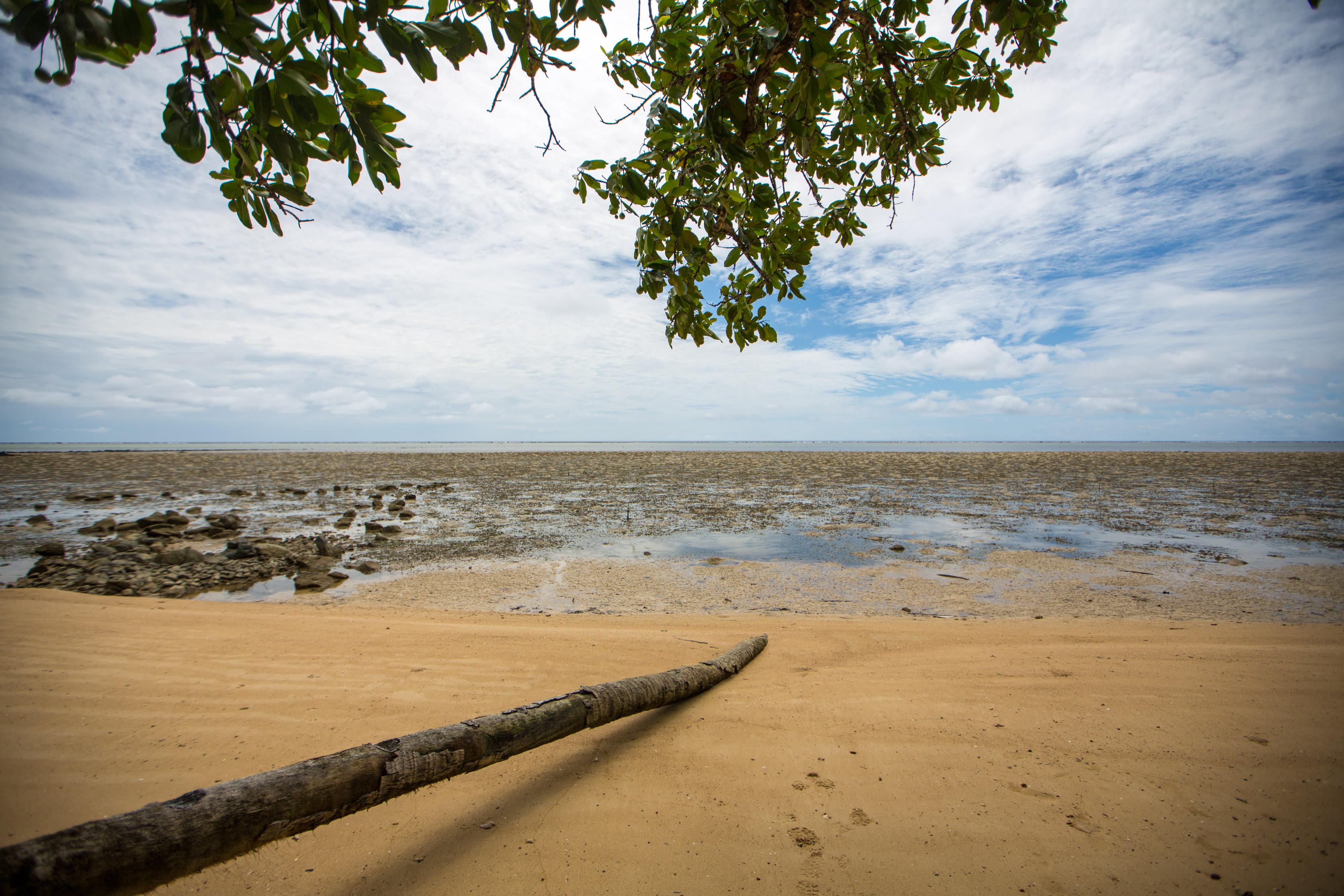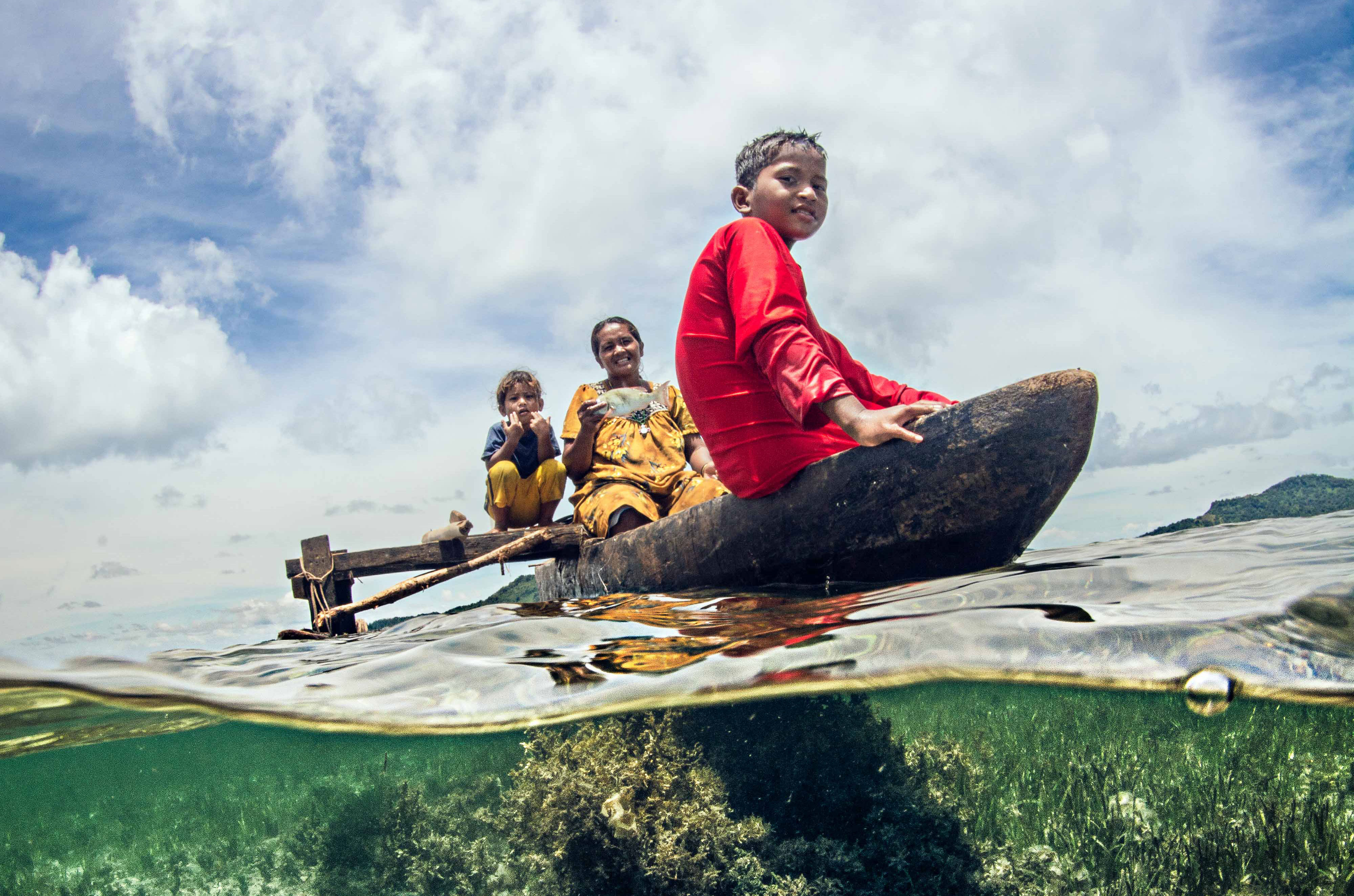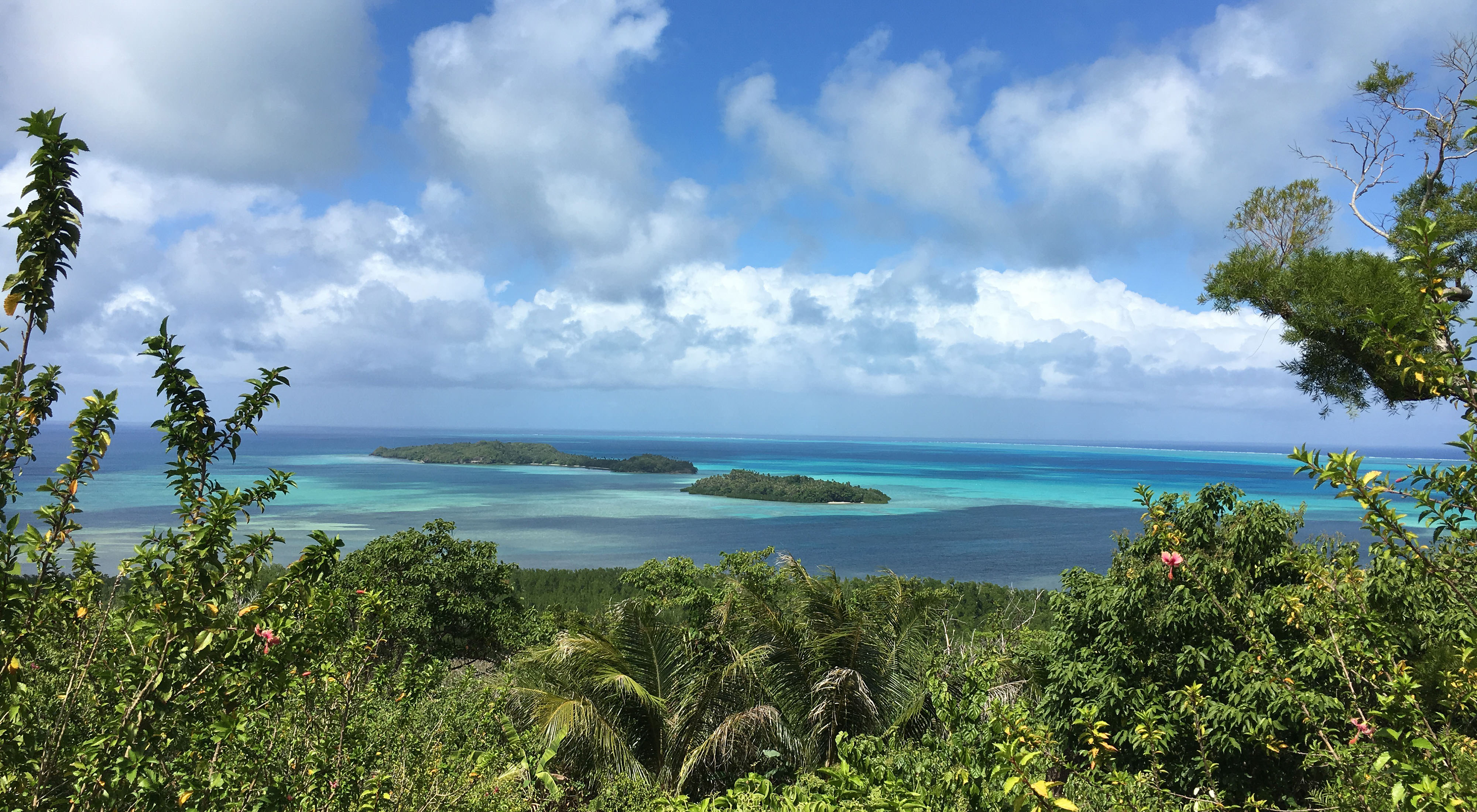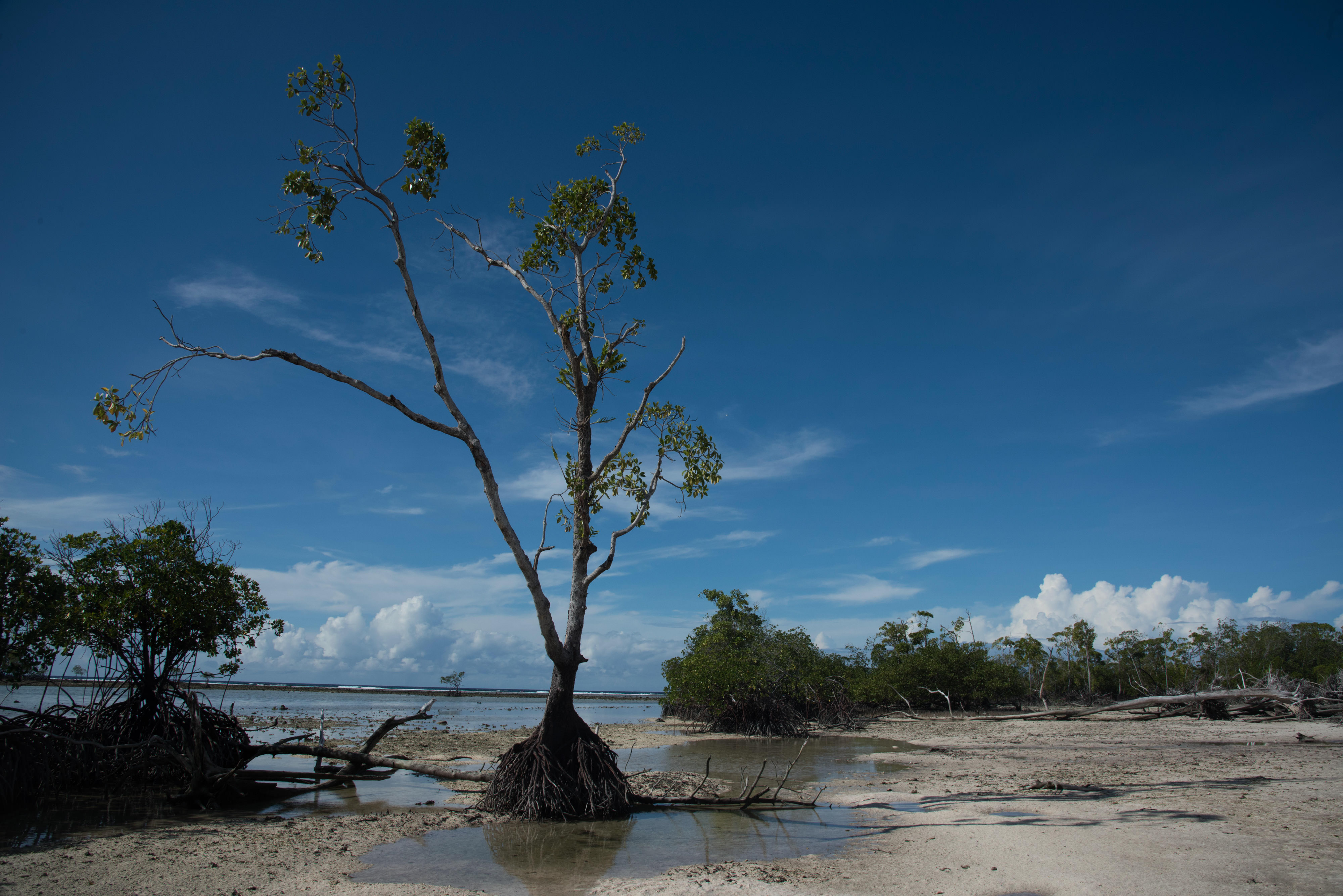Stories in the Pacific Islands
Micronesia Challenge: 30, 20, One Micronesia
The Nature Conservancy has worked to advance community-based conservation in Micronesia for 30 years.
Micronesia is a collection of small islands, but its footprint spans almost 5 percent of the entire Pacific Ocean. This diverse and vibrant place supports the livelihoods of 650,000 people, 12 languages, more than 480 coral species and over 1,300 reef fish species.
In 2006, Micronesia leaders made a big, bold commitment to care for nature by declaring the Micronesia Challenge to effectively conserve at least 30 percent of the near-shore marine resources and 20 percent of the terrestrial resources across Micronesia by the year 2020.

The Micronesia Challenge is a network of people, governments, islands, seas and forests and includes: the four island states of The Federated State of Micronesia (FSM), Yap, Chuuk, Pohnpei and Kosrae; The Republic of the Marshall Islands (RMI); The Republic of Palau; and the two U.S.-affiliated islands, The Territory of Guam and The Commonwealth of the Northern Mariana Islands (CNMI). Each place has its own unique natural assets and organizational challenges, which is why projects are tailored to best meet the needs of each local community.
Since its inception, the Micronesia Challenge has achieved great success in protecting land and sea for people and nature, and it has inspired other nations to take similar action. Practitioners of the network coordinate and share best practices for conservation, management and empowerment to increase financial and technical resources for conservation, develop capacity for effective resource management, and, most importantly, implement conservation and management actions on the ground with communities.
In partnership with local communities, other NGOs, governments and donors, The Nature Conservancy (TNC) has advanced the Micronesia Challenge through investments and by using a participatory approach guided by science to:
- develop community management plans,
- establish protected areas,
- improve fisheries,
- leverage funding opportunities,
- build capacity,
- introduce innovative conservation finances, and
- facilitate bringing people together to care for their islands and work at the regional level to confront global threats such as climate change.

Micronesia Challenge 2030
Now that 2020 has arrived, Micronesians have reflected on what’s been accomplished and have set goals for the next 10 years of innovative conservation. While significant headway has been made, there is still much more to do. The threats from unsustainable development, pollution, overharvesting and climate change are rapidly increasing, and changing lifestyles are affecting people’s values and connection to nature.
Micronesian leaders have set a vision for 2030 that Micronesian communities are resilient and thriving, benefitting equitably from healthy, well-managed ecosystems and have better access to food and water.
Leaders have committed to the Micronesia Challenge 2030 goal for effective management that will increase from 30 to 50 percent of marine resources and from 20 to 30 percent of terrestrial resources across Micronesia. Additional goals include:
- increase livelihoods from sustainably managed natural resources,
- reduce the risks from climate impacts,
- reduce invasive species and increase restoration of habitats,
- incorporate fisheries management approaches that are integrated with marine protected areas,
- increase investments and leverage additional finances, and
- fully resource the Micronesia Challenge management team and steering committee.
TNC is working to articulate a cohesive 10-year plan and approach to achieve the goals for community-based conservation. The plan aims to bring new tools, thinking and approaches to our planning approaches, including systems thinking, market-based solutions and gender equity. The plan will ensure conservation is led by Micronesians and benefits people, and it leads to innovative policies and solutions that address conservation and community development challenges. The next phase of the Micronesia Challenge is already underway, and we are optimistic about future results and outcomes.
Highlighted Accomplishments
Sign-Up Now
Receive Email From Us
Sign-Up Now
Receive Email From Us
LAND
Many projects have been ground breaking such as the Yela Forest conservation easement—a legal covenant that effectively pays landowners to leave their holdings undisturbed—that was the first in the Asia Pacific region. The 400-acre Yela forest on Kosrae, FSM, is now protected and so is the heart of the world’s largest remaining stand of ka trees (Terminalia carolinensis). Found only on Kosrae and the nearby island of Pohnpei, ka trees are graceful giants known for their umbrella-shaped crowns and huge, moss-covered buttresses that resemble the fins of a rocket ship. The Yela forest also contains part of an unusually pristine tropical watershed, and the forest is a rare link to Kosrae’s indigenous heritage.

SEA
With legislation that came into effect in January 2020, the Palau National Marine Sanctuary is being implemented. It covers 80 percent of Palau’s waters, making it the sixth-largest fully protected ocean area in the world. The sanctuary bans all commercial fishing, but local fishers are still allowed to fish within the remaining 20 percent to protect livelihoods. Palauans are dependent on their natural resources in their daily lives for food and income. For example, 38 percent of Palauans still catch their own seafood, which is their primary source of protein. Protected areas allow fish to produce more offspring that then swim into non-protected waters and can lead to more abundant catches for local fishers.

PEOPLE
To support emerging leaders in the region, the Bill Raynor Micronesia Challenge Scholarship Fund was established in 2016 in his honor. To date, thirteen students have received funding from the scholarship fund. Leadership capacity and development continues to be a critical need for the Micronesia Challenge, and in addition to funds, the recipients receive close guidance and mentorship from key entities and individuals within the Micronesia Challenge. Currently, six students are pursuing master’s degrees related to the environment, and two are studying biology at the doctoral level. Bill Raynor (February 22, 1957 – September 1, 2015) last served as the Director of TNC’s Pacific Division, and over his 34 years of conservation work in the region, he was committed to identifying and nurturing conservation champions in Micronesia.
Since its inception, the Micronesia Challenge has achieved great success in protecting land and sea for people and nature, and it has inspired other nations to take similar action. Practitioners of the network coordinate and share best practices for conservation, management and empowerment to increase financial and technical resources for conservation, develop capacity for effective resource management, and, most importantly, implement conservation and management actions on the ground with communities.
In partnership with local communities, other NGOs, governments and donors, The Nature Conservancy (TNC) has advanced the Micronesia Challenge through investments and by using a participatory approach guided by science to:
- develop community management plans,
- establish protected areas,
- improve fisheries,
- leverage funding opportunities,
- build capacity,
- introduce innovative conservation finances, and
- facilitate bringing people together to care for their islands and work at the regional level to confront global threats such as climate change.



